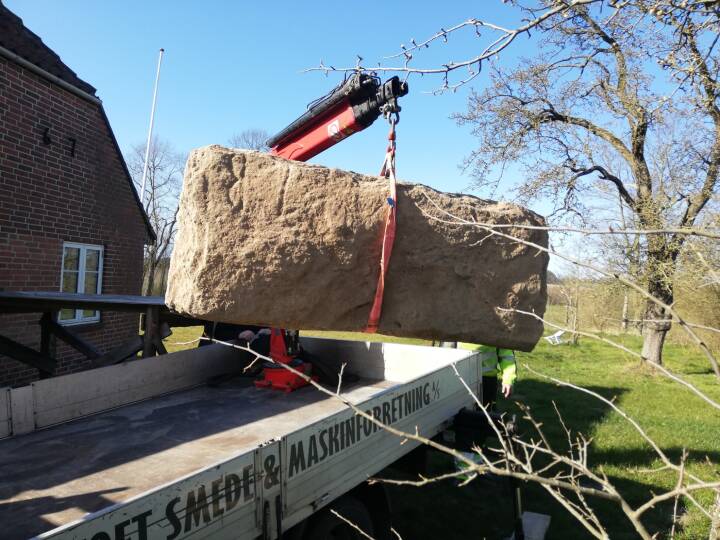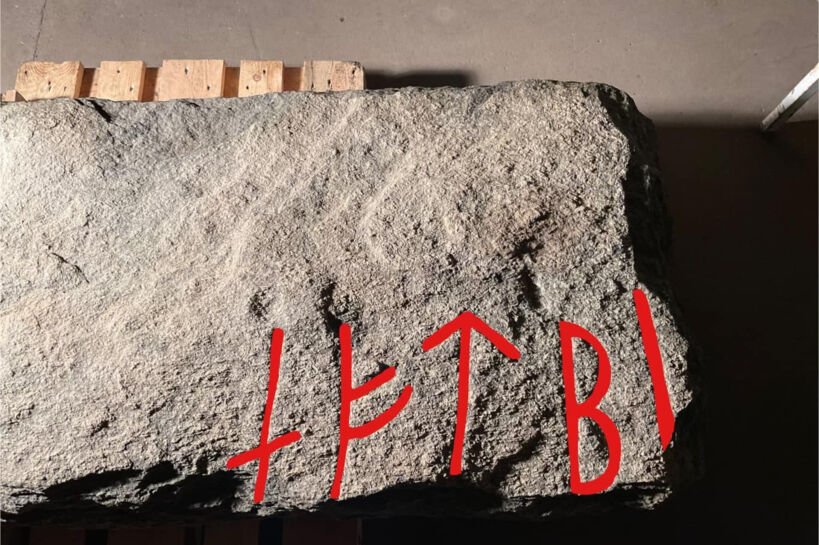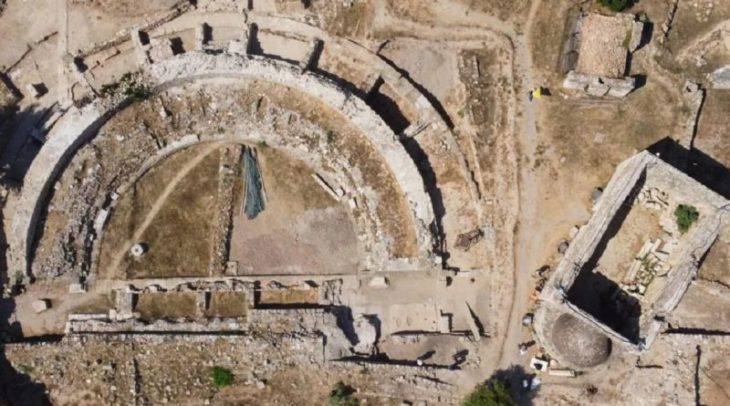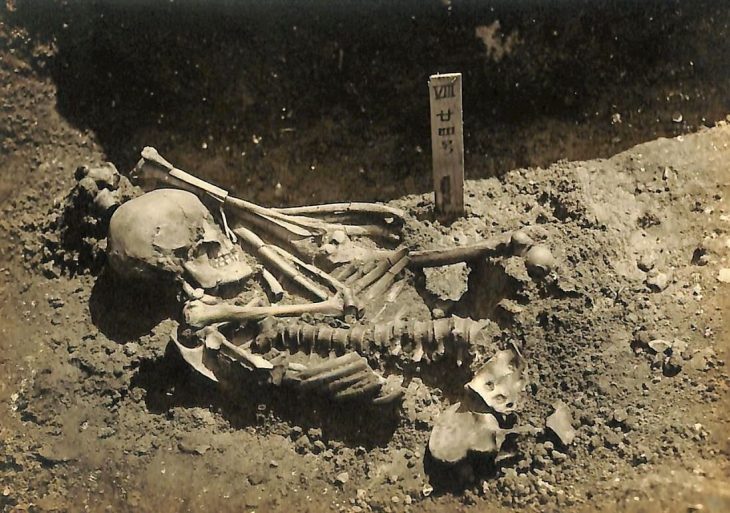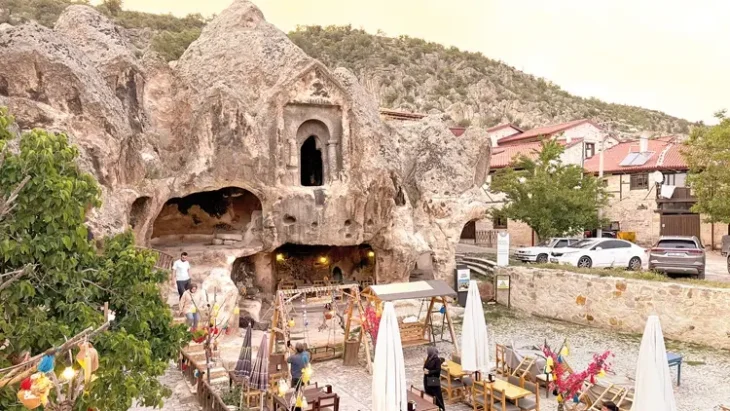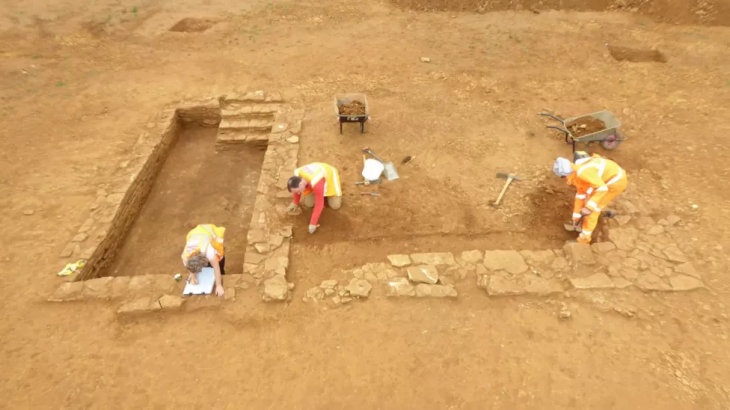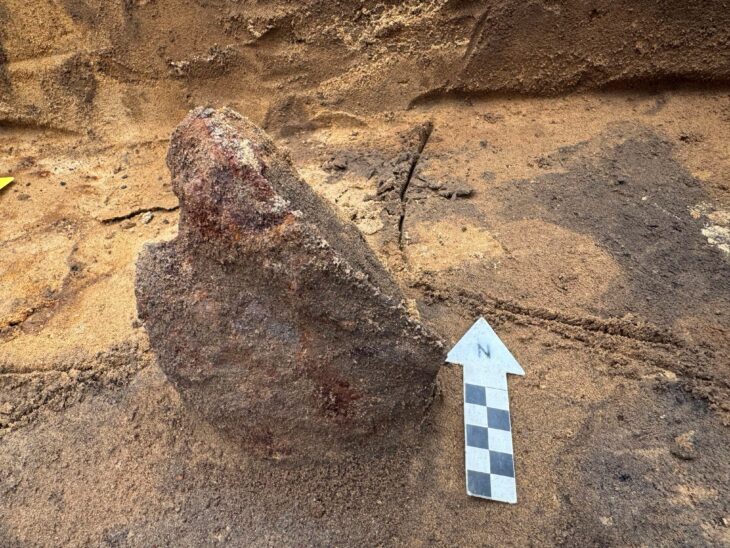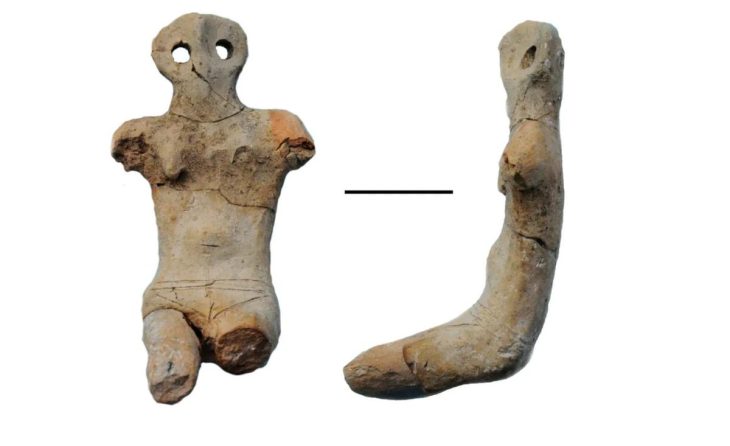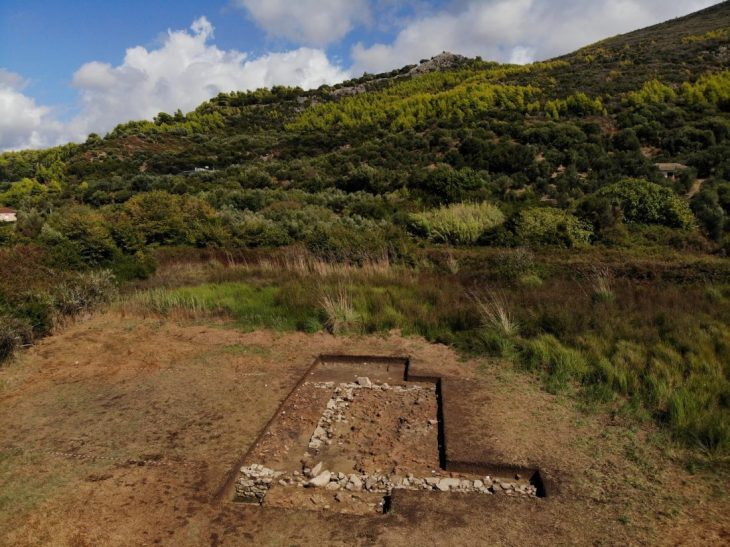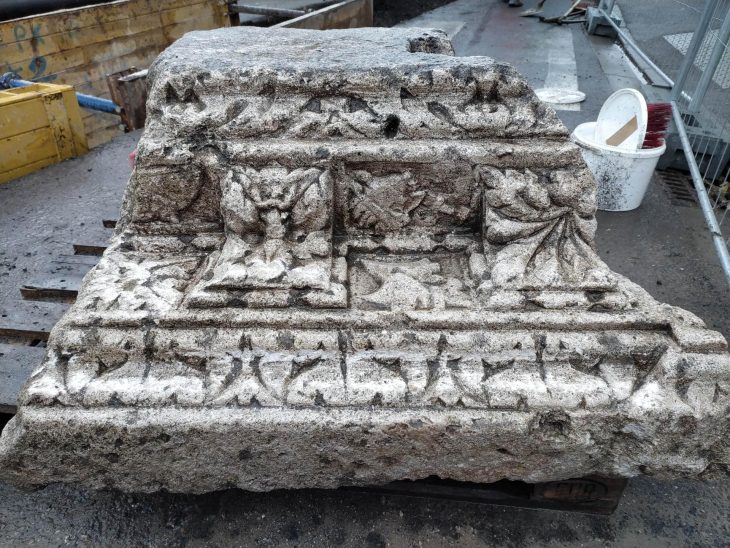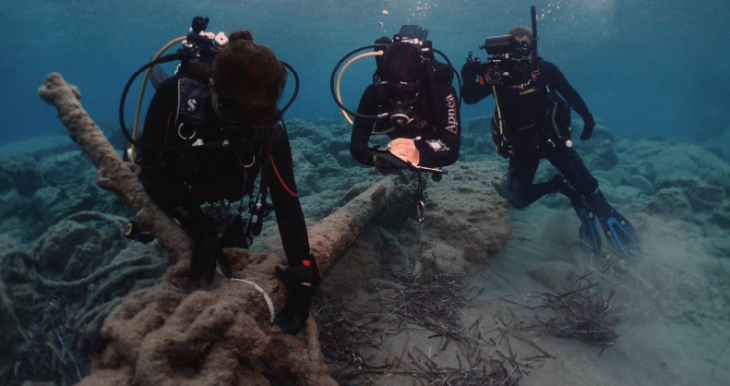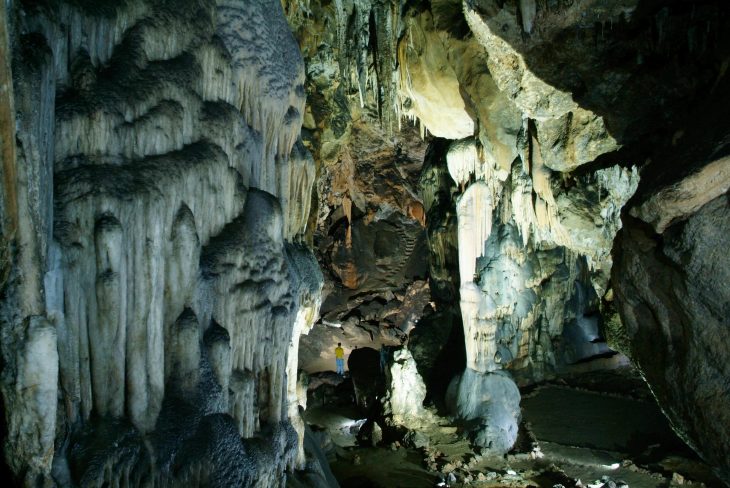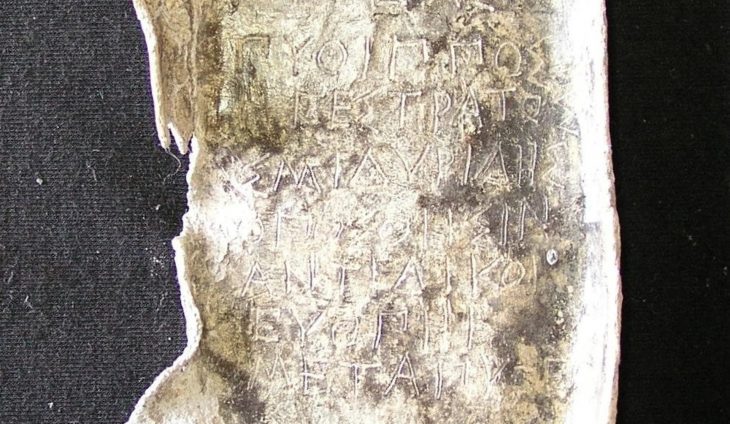A couple in Denmark discovered a massive rune stone weighing approximately 900 kilograms during a home renovation project that planned to remove the old linoleum kitchen floors of their home in the village of Mosekær, just outside the city of Randers.
Discovered accidentally by Lene Brandt and her husband, Anders Nielsen, measuring two meters in length and 80 centimeters in width, this ancient stone might be one of the oldest rune stones in Denmark.
The national museum, Nationalmuseet, has declared it as danefæ, or a treasure, and is now working hard to determine its exact age. The age of the stone is important because it determines whether the five runes engraved on it begin or end the inscription. The age of the stone is crucial, as it depends on whether the five runes engraved on it initiate or conclude the inscription.
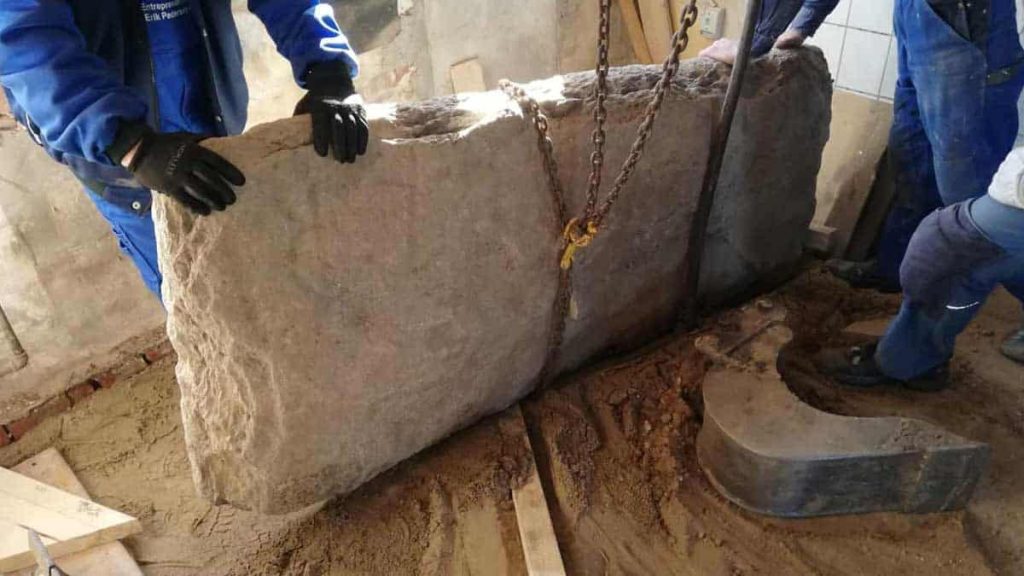
The five runes, which can be read as “aft bi,” translate to “after B.” Rune stones were typically erected in memory of significant individuals, and in this case, the inscription might be referring to a person named Bjørn, Bjarne, or Birk.
If the runes mark the beginning of the text, the stone most likely belongs to Denmark’s earliest group of rune stones, making it an extremely rare find.
📣 Our WhatsApp channel is now LIVE! Stay up-to-date with the latest news and updates, just click here to follow us on WhatsApp and never miss a thing!!
The area around Randers is particularly interesting to anyone interested in runes because there have been as many as 44 runestones discovered there. “Rune” is derived from Old Norse and means “secret knowledge and wisdom.”
Only about 10 to 20 rune stones from the 700-800s have been found in Denmark, according to Lisbeth Imer, a senior researcher and runologist at the Nationalmuseet. There are about 200 known Viking Age rune stones scattered throughout the nation, the earliest dating to the 700s and the most recent to the 900s, making these early stones particularly noteworthy. For instance, the renowned Jelling Stones were erected around 965.
The Randers rune stone may be older than the Jelling stones, but they cannot be directly compared because the Jelling stones are complete, in their original location, and mentioned in historical sources. In contrast, the Randers stone is a fragment with only a small portion of the inscription preserved.
The rune stone is currently housed at Museum Østjylland, awaiting further analysis to determine its age and possibly reveal more about the Viking past.

